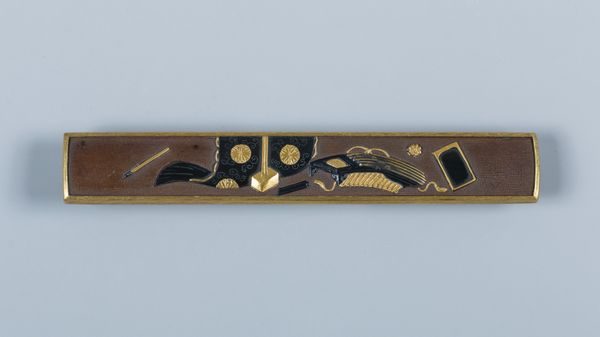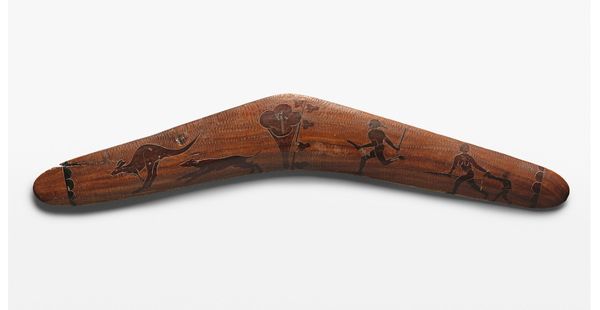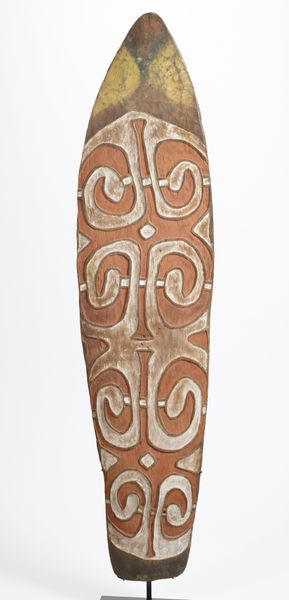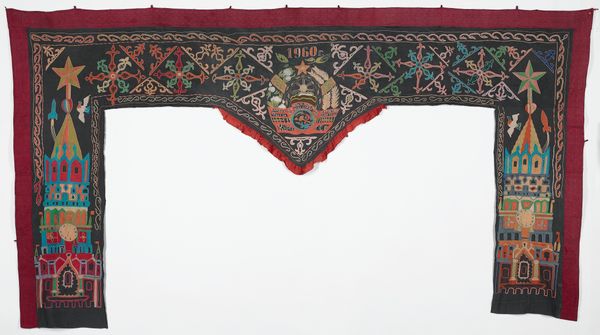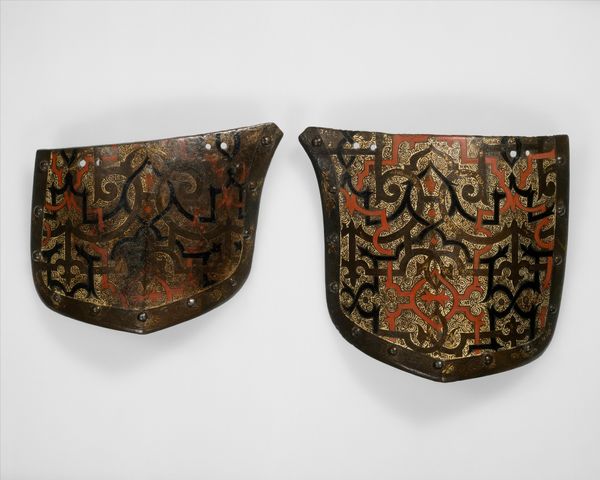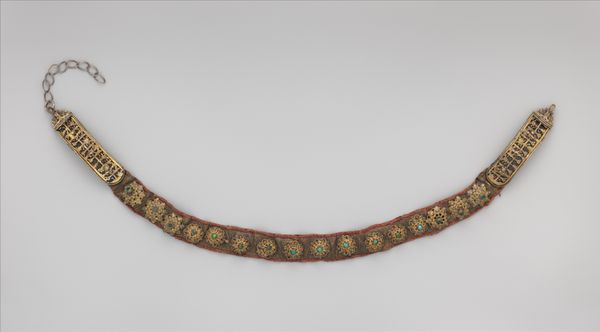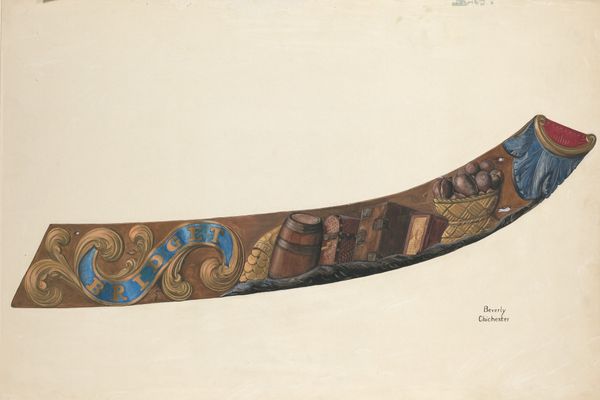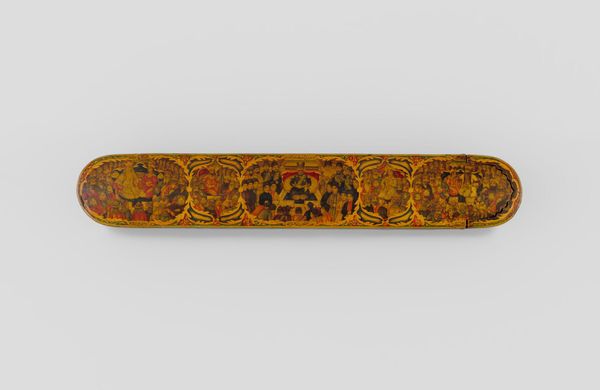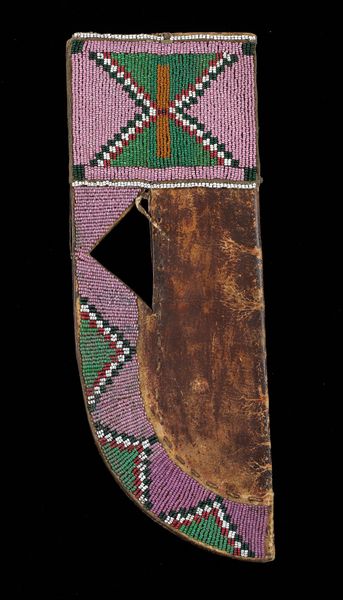
Crinet Plate Belonging to an Armor for Field and Tournament Made for Duke Nikolaus "The Black" Radziwill (1515–1565), Duke of Nesvizh and Olyka, Prince of the Empire, Grand Chancellor and Marshal of Lithuania 1530 - 1900
0:00
0:00
metal
#
medieval
#
metal
#
11_renaissance
#
geometric
#
armor
#
decorative-art
Dimensions: L. 13 7/8 in. (35.5 cm); H. 3 7/8 in. (9.8 cm); Wt. 9 oz. (261 g)
Copyright: Public Domain
Crafted around 1550 by Kunz Lochner, this crinet plate, part of a larger armor, features intricate inlaid designs in gold, black, and red. Notice how the interlaced patterns evoke a sense of dynamic movement, and the use of arabesque motifs suggests an influence from Islamic art, a style that often appeared in armor decoration due to its ornamental value. These arabesques and geometric designs are not merely decorative. They are visual echoes of a long and complex history. Similar patterns appear in various forms across cultures and centuries, from the tiled mosaics of ancient Rome to the illuminated manuscripts of the medieval period. Their persistent recurrence speaks to a deep-seated human desire for order and beauty, a longing to translate the chaos of the world into comprehensible, harmonious forms. Consider how such patterns, initially born from religious or mystical contexts, transcend their original meanings to become symbols of status, taste, and cultural identity. The repetition and variation of these motifs are like a collective dream, a recurring visual language that shapes our understanding and perception of the world.
Comments
No comments
Be the first to comment and join the conversation on the ultimate creative platform.
